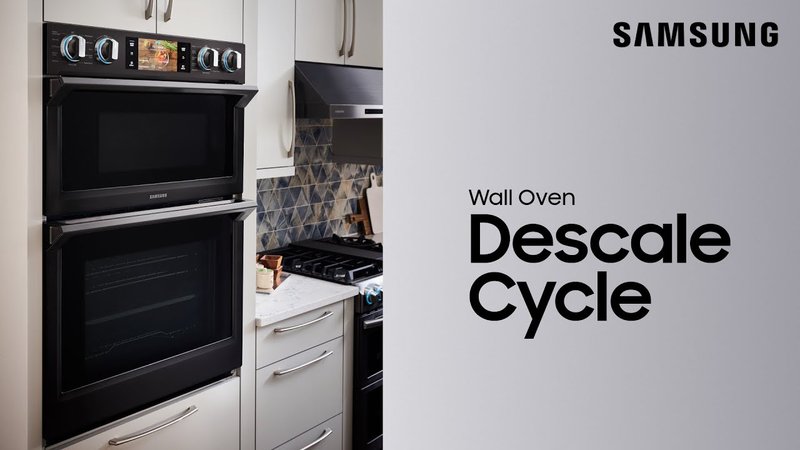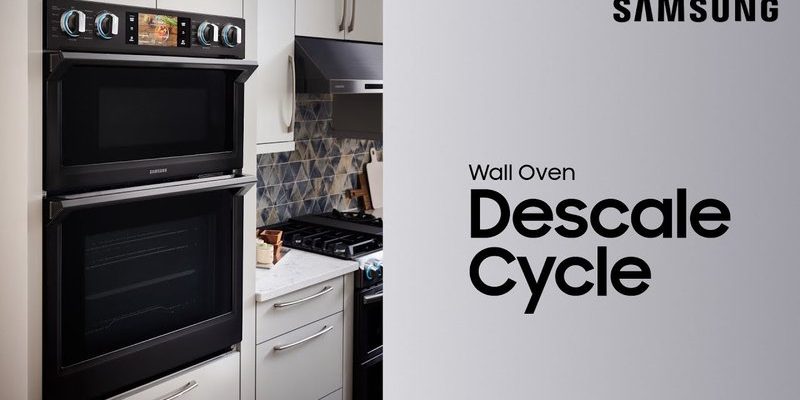
Honestly, it’s pretty easy to accidentally void your Samsung oven or range warranty if you don’t know the rules. Imagine you’re trying to fix a small glitch by yourself or using unauthorized parts just to save time or money—it sounds harmless until the manufacturer says, “Sorry, that’s not covered.” Let me explain how to steer clear of those pitfalls, so your oven keeps working, and your warranty stays intact.
You might be wondering exactly what kinds of things can void your Samsung oven or range warranty. Here’s the thing: companies write their warranty policies to protect themselves from damage caused by misuse or unauthorized tinkering. This means if you—or someone else—opens up your oven or installs parts that aren’t approved, that’s a red flag for Samsung.
For example, Samsung specifies that repairs or replacements should be done by authorized service technicians only. Trying to replace a broken heating element or control board yourself can be tempting, especially with all the DIY videos online. But if that repair goes wrong, it can damage the unit or create safety hazards, which is not something Samsung will cover. So, the warranty is like a trust agreement—you trust them to fix problems properly, and they protect you if you follow the rules.
Additionally, damage caused by improper installation or external factors (like electrical surges or accidents) often isn’t covered. Even small things like using the wrong type of cleaning agents or failing to follow maintenance instructions can cause issues that void the warranty.
Let’s talk about parts for a second. It’s tempting to grab a cheaper or generic replacement part when something breaks. But here’s where many people go wrong. Samsung ovens and ranges are designed to work with specific parts that meet strict quality standards. Using unauthorized parts can cause malfunctions or, worse, safety risks.
Imagine you have a remote sensor or control panel that needs replacing. If you use a generic or third-party part, it might not sync correctly with your oven’s system. That mismatch can cause your oven to malfunction or disable important safety features. In warranty terms, this is often a no-go.
To avoid voiding your Samsung oven or range warranty, always opt for parts that Samsung approves or that come through their authorized service channels. This way, you’re not just protecting your warranty but also ensuring your appliance works as safely and efficiently as it should.
Samsung ovens, especially smart models with Wi-Fi connectivity or remote controls, run on a complex software system. You might be thinking about resetting the code or syncing the remote yourself if something isn’t responding. Here’s a little secret: tinkering with the software or trying to hack your oven’s firmware is a common reason warranties get voided.
Why? Because software changes can affect the device’s safety or performance in ways that aren’t easy to detect. For instance, if you try to pair a universal remote instead of the Samsung-approved one, the oven might lose some key functions or stop communicating with sensors. This breaks warranty terms since Samsung can’t guarantee the oven’s behavior after unauthorized modifications.
If you run into software glitches, the best move is to contact Samsung’s support or have an authorized technician perform a system reset or troubleshooting. That keeps your warranty safe and often gets the problem fixed properly.
Installation might seem like just unboxing and plugging in, but there’s actually a lot Samsung expects you to do—or have done—for your warranty to stay active. Using the wrong power supply, skipping grounding, or installing the oven in a poorly ventilated space can all lead to invisible damage over time.
For example, if your range isn’t installed by a certified professional or doesn’t adhere to local electrical codes, Samsung could argue that this improper installation voids your warranty. It’s like trying to blame the oven when the root cause is the setup.
Maintenance is another big deal. Ignoring simple cleaning instructions or using harsh chemicals can wear down the oven’s internal parts. The warranty typically covers defects, not damage caused by neglect or misuse. So, following Samsung’s recommended maintenance schedule and proper cleaning techniques isn’t just good housekeeping—it’s protection for your investment.
Here’s where things get tempting for the handy type: modifying your oven. Whether it’s adding custom racks, changing internal wiring, or installing third-party remote controls, modifications are a quick way to lose warranty coverage.
Even if you think the mods add value or improve performance, Samsung’s warranty is crystal clear—it’s for the original product as designed. Alterations can cause unexpected problems that Samsung isn’t responsible for. Plus, if a problem happens, technicians might struggle to diagnose issues caused by non-standard parts or changes.
If your oven needs repair, the safest route is always authorized service. Even if you have a remote or smart features that you want to pair or reset, make sure those actions fall under Samsung’s recommended procedures.
You might think of this as an annoying extra step, but holding onto your purchase receipt, warranty card, and service records can be a lifesaver. If there’s ever a question about whether your Samsung oven or range warranty is still valid, having proof of purchase and authorized repairs makes all the difference.
Here’s a quick tip: make digital copies of everything. That way, if your paperwork gets lost or damaged, you can still produce it when you need it. Documentation shows Samsung that you followed the right channels for repairs or replacements, which keeps the warranty in good standing.
Think of it like keeping a medical record for your appliance. It shows the history, proves you didn’t mess with anything unauthorized, and helps technicians troubleshoot faster.
Last but not least, the simplest way to keep your warranty intact is to use your oven the way Samsung designed it. Sounds obvious, but it’s easy to forget. Overloading the oven, using cookware that’s not recommended, or running the appliance outside its intended range can stress components and lead to damage.
For instance, some people use their ranges for heating rooms or drying clothes—things the warranty definitely doesn’t cover. If the oven fails after such misuse, Samsung will likely deny a claim because it wasn’t a manufacturing defect.
Following user manuals, avoiding shortcuts, and respecting safety warnings might sound like common sense. But here’s the kicker: warranties rely on that common sense. Think of your warranty like a friendship—you both have responsibilities.
“The warranty isn’t just a piece of paper—it’s a promise that your Samsung oven or range will serve you well, as long as you treat it right.”
In the end, keeping your Samsung oven or range warranty active mostly comes down to one big thing: trust. Trust the manufacturer to cover defects and provide authorized repair services, and trust yourself to avoid unauthorized fixes, parts, or risky software tweaks. That way, when something does need attention, you’ll have peace of mind knowing you’re protected.
So next time your Samsung oven acts up or you think about a quick DIY fix, pause and ask: “Will this step protect or void my warranty?” Keeping those few simple rules in mind can save you a lot of hassle—and keep your kitchen running smoothly for years.
